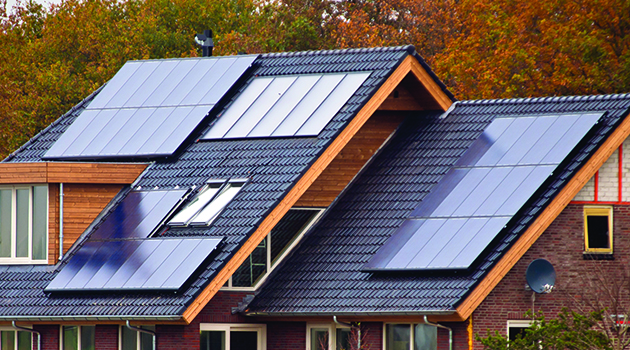 Most of the renewable energy market is geared towards “grid-tied” systems where the homeowner sells electricity to the utility when there’s extra being produced. These systems don’t run at benign car battery voltage anymore but are pumping power at up to 600-volts DC whenever the sun is shining! It’s extremely important for firefighters and their commanders to be able to identify homes with solar electric (photovoltaic or PV) systems and understand how these systems work.
Most of the renewable energy market is geared towards “grid-tied” systems where the homeowner sells electricity to the utility when there’s extra being produced. These systems don’t run at benign car battery voltage anymore but are pumping power at up to 600-volts DC whenever the sun is shining! It’s extremely important for firefighters and their commanders to be able to identify homes with solar electric (photovoltaic or PV) systems and understand how these systems work.
“Putting a foot, axe or saw into a 600-volt DC solar array during daylight hours is a very bad idea!”
Much inaccurate information about PV and firefighter safety has been published on the internet recently, even to the point of recommendations to “let it burn” if solar panels are spotted on a roof. As a firefighter and renewable energy consultant, I hope to set the record straight.
The Basic Issues
Flat panels on roofs, poles, and racks are not always electrical. They could be providing room lighting, hot air, hot water, or electricity; and multiple types of panels could be combined in one installation.
If there is a solar electric system involved, “pulling the meter” will only kill power coming in from the utility grid. Other circuits may remain live, such as household circuits if the system has battery backup, an auto-start gasoline generator, or when the sun is shining and charging the PV circuits. Multiple disconnects for various parts of the system are very common.
In 2014, new requirements were implemented for Rapid Shutdown Systems (RSS) for rooftop PV arrays that allow emergency responders to shut down an entire rooftop PV array with a single readily accessible switch from the ground near the main electrical service entrance.
All Rapid Shutdown Systems must be labeled as follows:

The NEC 2014 requirements said that the system must reduce voltage from the array to 10 Volts DC within 10 seconds, outside of a 10-foot perimeter on the roof and within five feet of entering a building. When first implemented, there was controversy about where the switch and label should be placed, scarcity of the required equipment, and lack of inspector experience with the new requirements, so many AHJs delayed implementing RSS for a year or more.
NEC 2017 brought many clarifications to RSS, including that it is not required on unoccupied structures, reducing the perimeter to only one foot from the array, and raising the allowed voltage under the array to 80 Volts DC in 30 seconds. Because some of these systems were installed during the delay period, there are two different stickers that must be used. The red one to the left is for NEC 2014 compliant systems, the yellow one to the right for NEC 2017 compliant systems (Photo 2). Other labels that are now required include marking all conduit carrying DC wires from a PV array with this sticker at multiple, highly visible locations on the roof, sides of structures, and inside, directly on the conduit (Photo 3).

![]()
A hot stick will not detect live DC voltage; these work only with AC.
Roof access may be limited by solar panels of any type. While some areas have local ordinances requiring setbacks and pathways, others do not or the system may have been grandfathered in. The roof areas on which you can walk or cut into for ventilation may be very limited. Putting a foot or ventilation saw into a 600-volt DC solar array during daylight hours is dangerous!
Setbacks to PV arrays are covered by the International Fire Code. They are intended to provide roof access and escape routes for firefighters who may need to ventilate the structure. In general, you can expect 36 inches of clear space from the peak of the roof and at least one 36-inch-wide access pathway on the street/driveway side of the building to the side of the array, which cannot be in front of a door or window. Commercial installations require even wider access pathways.

Because structure rooflines have become so complicated in recent years, the IFC grants fire AHJs permission to approve smaller setbacks if the PV system designer can prove other easy means of roof access.
Roof-mounted systems of any type are fragile and will not support the weight of firefighters or equipment. They are also very expensive, and damage should be avoided if possible during unknown or minor incidents, such as a possible chimney fire.
Renewable energy system components and disconnects may not be properly labeled, or you may not be familiar with what the labels mean.
Large backup battery banks may or may not be included and can pose chemical hazards (sulphuric acid), explosion hazards (hydrogen gas), and electrical hazards (powering household circuits even after you pulled the main meter).
Only solar electric systems pose significant firefighter hazards, but note that “solar shingles” may be hard to spot. Lots of pipes and a few thin wires indicate a solar hot water or hot air system with low-power electrical controls. Wires in conduit with no pipes indicate solar electric.
Locate the central electrical system control panel if you need to disconnect circuits. All renewable energy systems are controlled from a central point. There may be other breakers that disconnect individual parts of the system, but these could be located outdoors or on the roof. Battery banks are always located near this control point and may be the cause of smoke or a smoke smell in the first place.
Assume every electrical circuit is live even if you have pulled the main meter and shut off visible breakers. When the sun is shining, dangerous DC voltage is still being generated in the PV panels. The only way to eliminate this is to cover all panels with an opaque tarp. Note that scene lighting is not powerful enough to generate dangerous voltage from a PV array but lightning may be. If the home has battery backup, household AC circuits may be live at any time.
Do not step on or cut into PV panels during roof ventilation, especially during daylight. Find another place to ventilate, if possible, or change your attack strategy. After dark, only non-lethal battery voltage may still be present in wires leading to panels and anywhere in the system (if you did not locate the proper breakers to stop it).
Watch for changing conditions: for example, during salvage operations after dark, wires damaged during an attic fire may become live as sun hits the PV panels in the morning, and their melted insulation could make metal conduit live too.
Many renewable energy system installers now keep a 24/7/365 emergency contact number, so incident commanders can get a technician on scene ASAP to disconnect circuits if needed.
The many code improvements in the last few years have made a very positive impact on firefighter safety when operating near solar power systems. But always remember the basics:
•Perform a 360-degree walk-around by experienced personnel to identify and communicate possible hazards.
•Always assume that any electrical equipment and conduit is live. Don’t cut into it for any reason.
•Hosing down a burning PV array is most likely harmless. See the IAFF class for distances and voltages. Hosing down an electrical box (gray, sometimes with red switch handle) can be deadly; the outdoor rating does not cover fire hose streams.
•Your hot stick does not detect DC voltage, only AC. You can’t rely on it for most PV installations.
•Remember that legacy solar equipment may be in place, with faded or non-existent labeling and outdated protection systems.
•Locate, open, and secure any grid and solar disconnects you can find.
•Be aware of possible changing conditions at all times. A nighttime attic fire underneath a PV array could change drastically when the sun comes up.
By Dan Fink
Since 1991, Dan Fink has lived off the grid in Northern Colorado. He began his career in the solar industry in 1994 and was a firefighter for the Rist Canyon Volunteer Fire Department. He was the lead professor of solar energy technology at the Ecotech Institute in Aurora.


